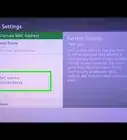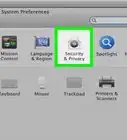This article was co-authored by Mitch Harris. Mitch Harris is a Consumer Technology Expert based in the San Francisco Bay Area. Mitch runs his own IT Consulting company called Mitch the Geek, helping individuals and businesses with home office technology, data security, remote support, and cybersecurity compliance. Mitch earned a BS in Psychology, English, and Physics and graduated Cum Laude from Northern Arizona University.
wikiHow marks an article as reader-approved once it receives enough positive feedback. In this case, several readers have written to tell us that this article was helpful to them, earning it our reader-approved status.
This article has been viewed 1,117,120 times.
A local area network (LAN) is a network of devices that are all connected to each other in a single physical location, like a home or office building. This wikiHow will teach you how to set up a LAN to connect multiple Windows PCs.
Steps
Setting Up the LAN
-
1Determine the number of computers you want to connect. The number of computers you're connecting will determine the type of network hardware you'll need.
- If you are connecting four or less computers, you'll just need a single router, or one switch if you don't need internet.
- If you're connecting more than four computers, you'll want a router and a switch, or just a switch if you don't need internet.
-
2Determine your network layout. If your installing a permanent LAN solution, you'll want to keep cable length in mind. CAT5 Ethernet cables should not run longer than 250 feet. If you need to cover larger distances, you'll need switches at regular intervals, or you'll need to use CAT6 cables.
- You'll need one Ethernet cable for each computer you want to connect to the LAN, as well as an Ethernet cable to connect the router to the switch (if applicable).
Advertisement -
3Obtain the network hardware. To create a LAN, you'll need a router and/or a network. These pieces of hardware are the "hub" of your LAN, and all of your computers will be connected to them.
- The easiest way to create a LAN where every computer has access to the internet is to use a router, and then add a network switch if the router doesn't have enough ports.[1] A router will automatically assign an IP address to every computer that is connected to it.
- Switches are similar to routers but do not automatically assign IP addresses. Switches typically have many more Ethernet ports than a router has.
-
4Connect your modem to the WAN port on the router. This port may be labeled "INTERNET" instead. This will provide internet access to every computer that is connected to your LAN.
- You can skip this if you're setting up a LAN without internet access.
- You don't need a router at all to create a LAN, but it makes things easier. If you just use a network switch, you'll need to manually assign IP addresses to each computer after connecting them.
-
5Connect the switch to a LAN port on the router. If you're using a network switch to connect more computers, connect it to one of the LAN ports on the router. You can use any open port on the switch to make the connection. When connected, the router will provide IP addresses for every computer that is connected to either device.
Connecting Your PC
-
1Find the Ethernet port on your PC. You can usually find this on the back of your desktop tower, or along the side or back of a laptop.
- Slim laptops may not have an Ethernet port, in which case you'll need to either use a USB Ethernet adapter or connect wirelessly if your router allows it.
-
2Plug one end of an Ethernet cable into your computer. Make sure you're using an Ethernet cable (RJ45), not a telephone cable (RJ11).
-
3Plug the other end of the cable into an open LAN port. This can be any open LAN port on either the router or the switch, depending on your LAN setup.
-
4Test out your network (router only). If you're using a router, your work is complete. Once all of the computers are connected to a LAN port, they will be assigned IPs automatically and will appear on the network. If you set up your LAN for gaming, you should be able to start your LAN game and have each computer connect.[2]
- If you're using a switch and no router, you'll still need to assign IP addresses to each computer.
-
5Enable file and printer sharing. You won't be able to access resources on a networked computer until file and printer sharing is enabled. You can select specific files, folders, and drives to share on each computer, as well as share access to printers.
Assigning IP Addresses (No Router)
-
1Right-click on your network connection. You'll see this in your System Tray. If you are connecting your computers through a switch with no router, you'll need to assign each computer on the network its own individual IP address. This process is handled automatically if you're using a router.
- Think of an IP address as a mailing address. Each computer on the network needs a unique IP address so that information sent across the network reaches the correct destination.
-
2Click Open Network and Sharing Center.
-
3Click the Ethernet link at the top of the window. You'll see this next to "Connections."
-
4Click Properties.
-
5Click Internet Protocol Version 4 (TCP/IPv4). Make sure you don't uncheck it, just highlight it.
-
6Click Properties.
-
7Click the Use the following IP address radio button.
-
8Type 192.168.1.50 into the IP address field.
-
9Type 255.255.0.0 into the Subnet mask field.
-
10Type 192.168.0.0 into the Default gateway field.
-
11Click OK. This will save the settings for that computer. This computer is now configured on your network with a unique IP address.
-
12Open the Internet Protocol Version 4 properties on the next computer. Follow the steps above on the second computer to open the Internet Protocol Version 4 (TCP/IPv4) Properties window.
-
13Click the Use the following IP address radio button.
-
14Type 192.168.1.51 into the IP address field. Notice that the final group of numbers has incremented by 1.
-
15Enter the same values for Subnet mask and Default gateway. These values should be the same as they were on the first computer (255.255.0.0 and 192.168.0.0 respectively).
-
16Give each additional computer a unique IP. Repeat these steps for each additional computer, incrementing the IP address by 1 each time (up to 255). The "Subnet mask" and "Default gateway" fields should be the same on each computer.
Expert Q&A
-
QuestionWhat is subnet mask in IP addresses?
 Mitch HarrisMitch Harris is a Consumer Technology Expert based in the San Francisco Bay Area. Mitch runs his own IT Consulting company called Mitch the Geek, helping individuals and businesses with home office technology, data security, remote support, and cybersecurity compliance. Mitch earned a BS in Psychology, English, and Physics and graduated Cum Laude from Northern Arizona University.
Mitch HarrisMitch Harris is a Consumer Technology Expert based in the San Francisco Bay Area. Mitch runs his own IT Consulting company called Mitch the Geek, helping individuals and businesses with home office technology, data security, remote support, and cybersecurity compliance. Mitch earned a BS in Psychology, English, and Physics and graduated Cum Laude from Northern Arizona University.
Consumer Technology Expert A subnet mask separates where the inside of the network is and where the outside world is.
A subnet mask separates where the inside of the network is and where the outside world is. -
QuestionWhat should I do if any website is not opening?
 Mitch HarrisMitch Harris is a Consumer Technology Expert based in the San Francisco Bay Area. Mitch runs his own IT Consulting company called Mitch the Geek, helping individuals and businesses with home office technology, data security, remote support, and cybersecurity compliance. Mitch earned a BS in Psychology, English, and Physics and graduated Cum Laude from Northern Arizona University.
Mitch HarrisMitch Harris is a Consumer Technology Expert based in the San Francisco Bay Area. Mitch runs his own IT Consulting company called Mitch the Geek, helping individuals and businesses with home office technology, data security, remote support, and cybersecurity compliance. Mitch earned a BS in Psychology, English, and Physics and graduated Cum Laude from Northern Arizona University.
Consumer Technology Expert Make sure that you've entered a DNS server—if you haven't, you'll receive an error related to DNS and you won't be able to access any webpages. You can enter Google's free server with "8 8 8 8" or "8 8 4 4". If you use Comcast, enter "7 5 7 5 7 5 7 5" or "7 5 7 5 7 6 7 6".
Make sure that you've entered a DNS server—if you haven't, you'll receive an error related to DNS and you won't be able to access any webpages. You can enter Google's free server with "8 8 8 8" or "8 8 4 4". If you use Comcast, enter "7 5 7 5 7 5 7 5" or "7 5 7 5 7 6 7 6". -
QuestionHow do I connect a printer to a LAN?
 Community AnswerProperly configure the IP of the printer, and connect it to your switch or router -- preferably a router (it will assign an IP that is compatible to your network). Make sure the port you are using is open.
Community AnswerProperly configure the IP of the printer, and connect it to your switch or router -- preferably a router (it will assign an IP that is compatible to your network). Make sure the port you are using is open.
References
About This Article
1. Plug an Ethernet cable into your PC.
2. Connect the other end of the cable to the LAN port.
3. Open your network settings.
4. Enable file and printer sharing.
5. Assign an IP address if you're not using a router.

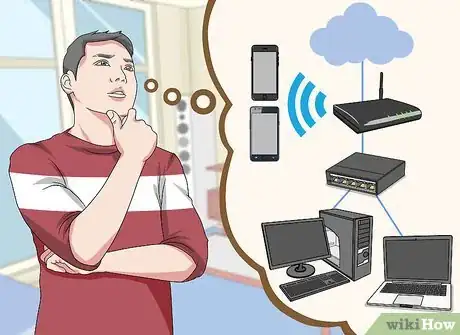
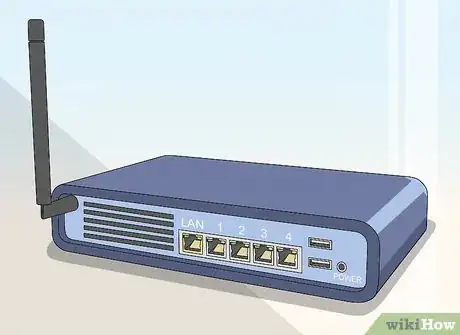


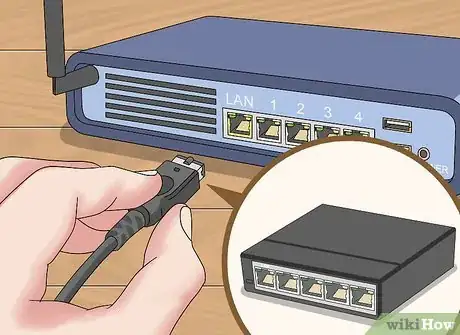
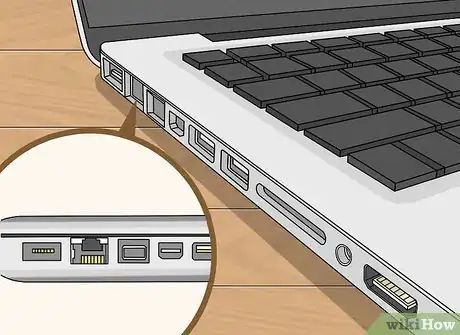
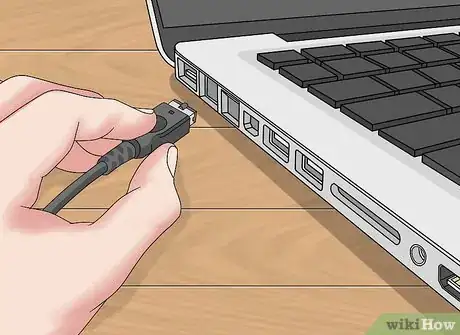
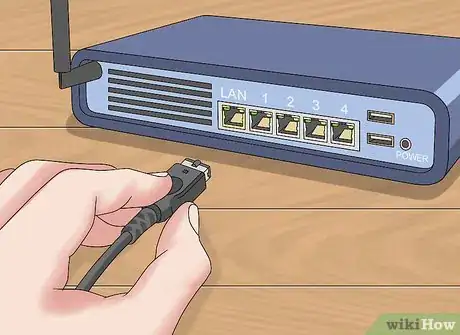

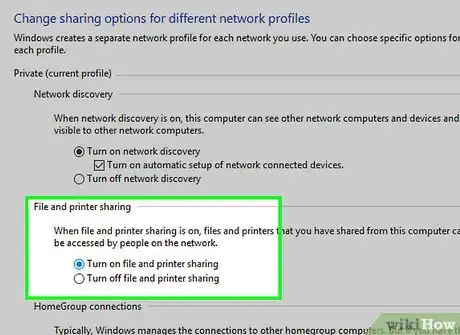
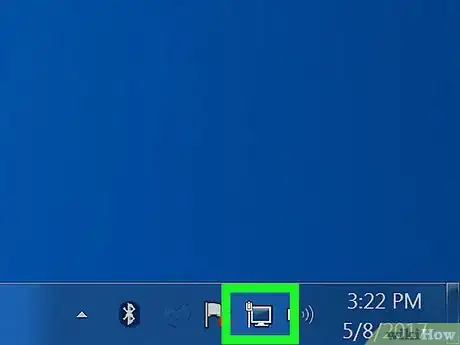
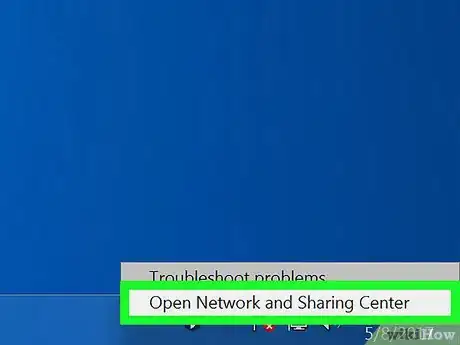
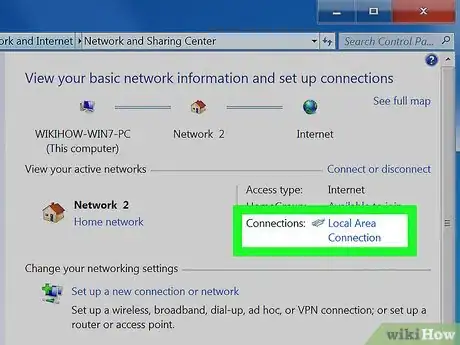
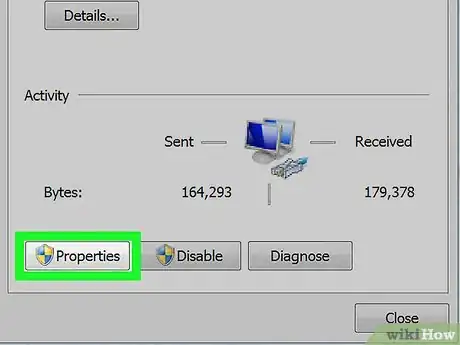
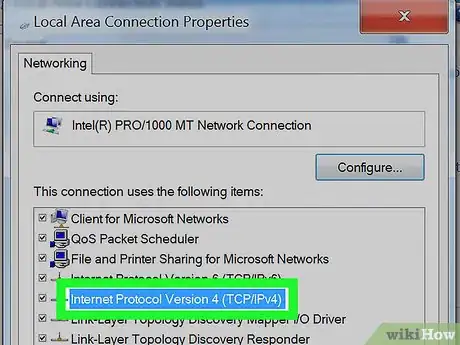
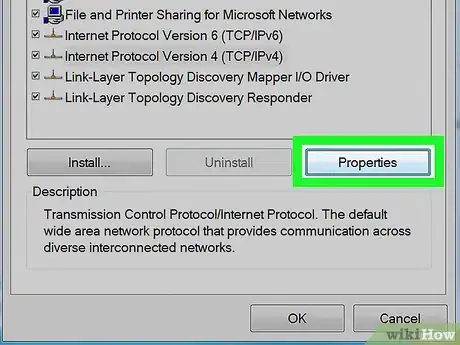
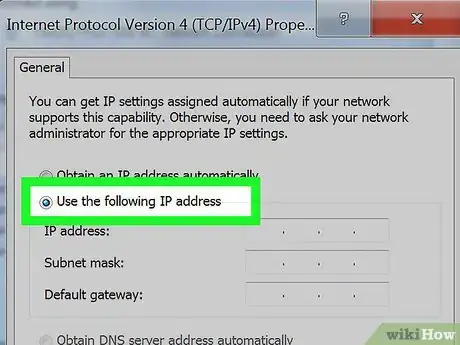

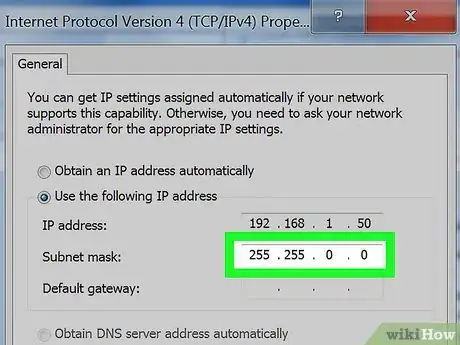
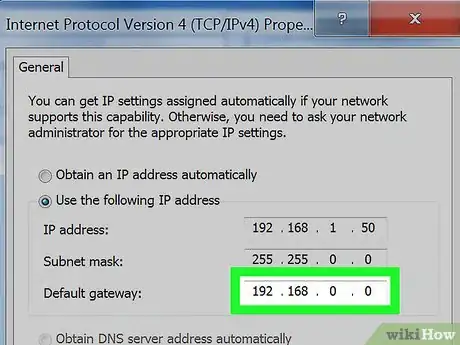
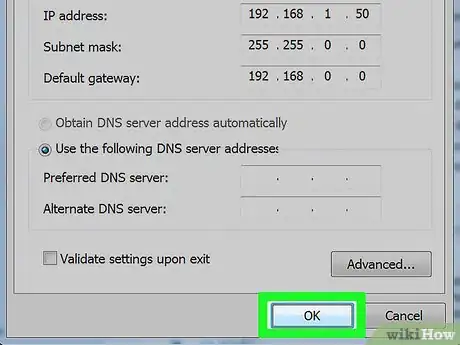
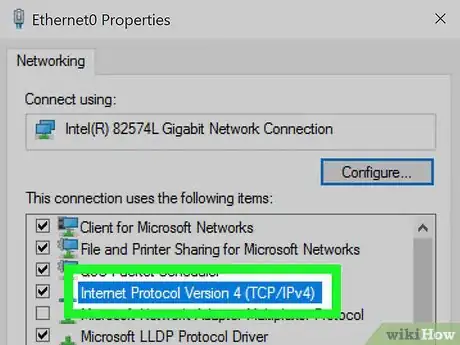
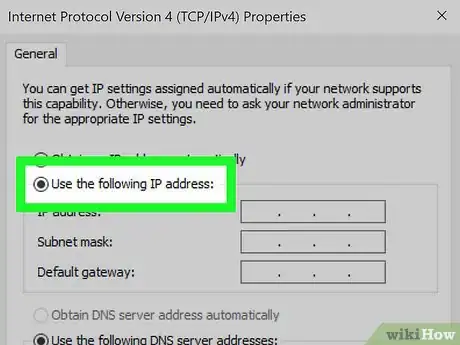
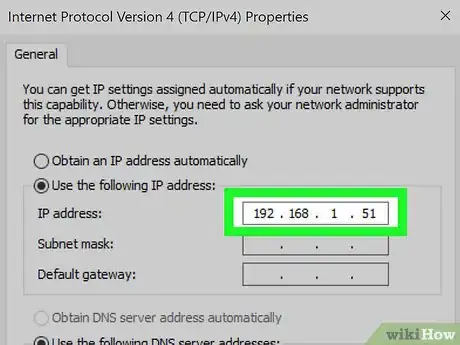
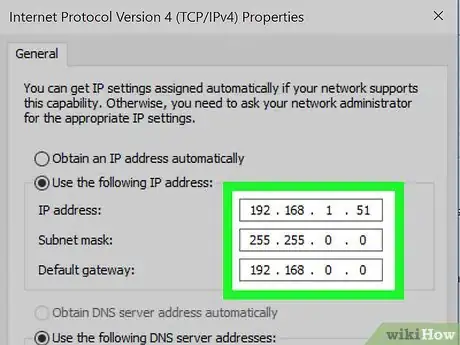
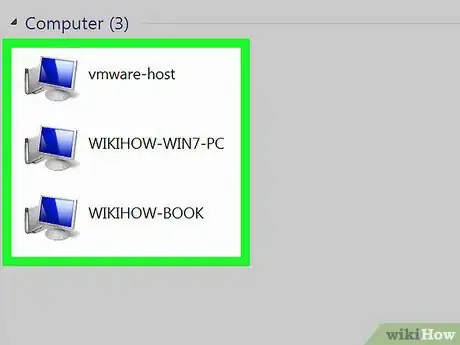
-Step-26-Version-2.webp)


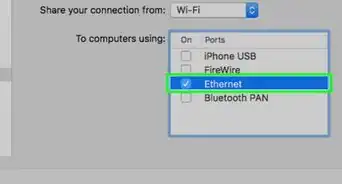
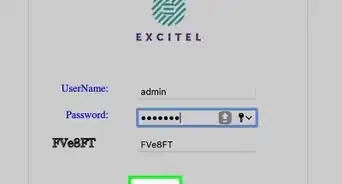
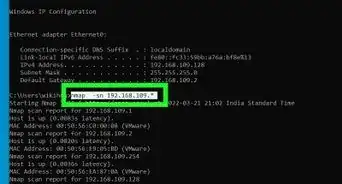

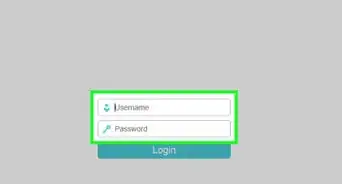

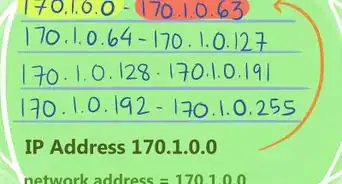
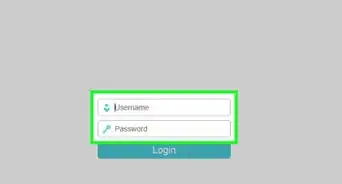

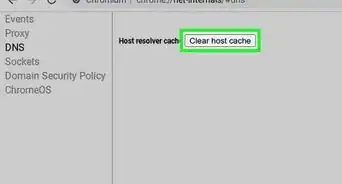









-Step-26-Version-2.webp)
